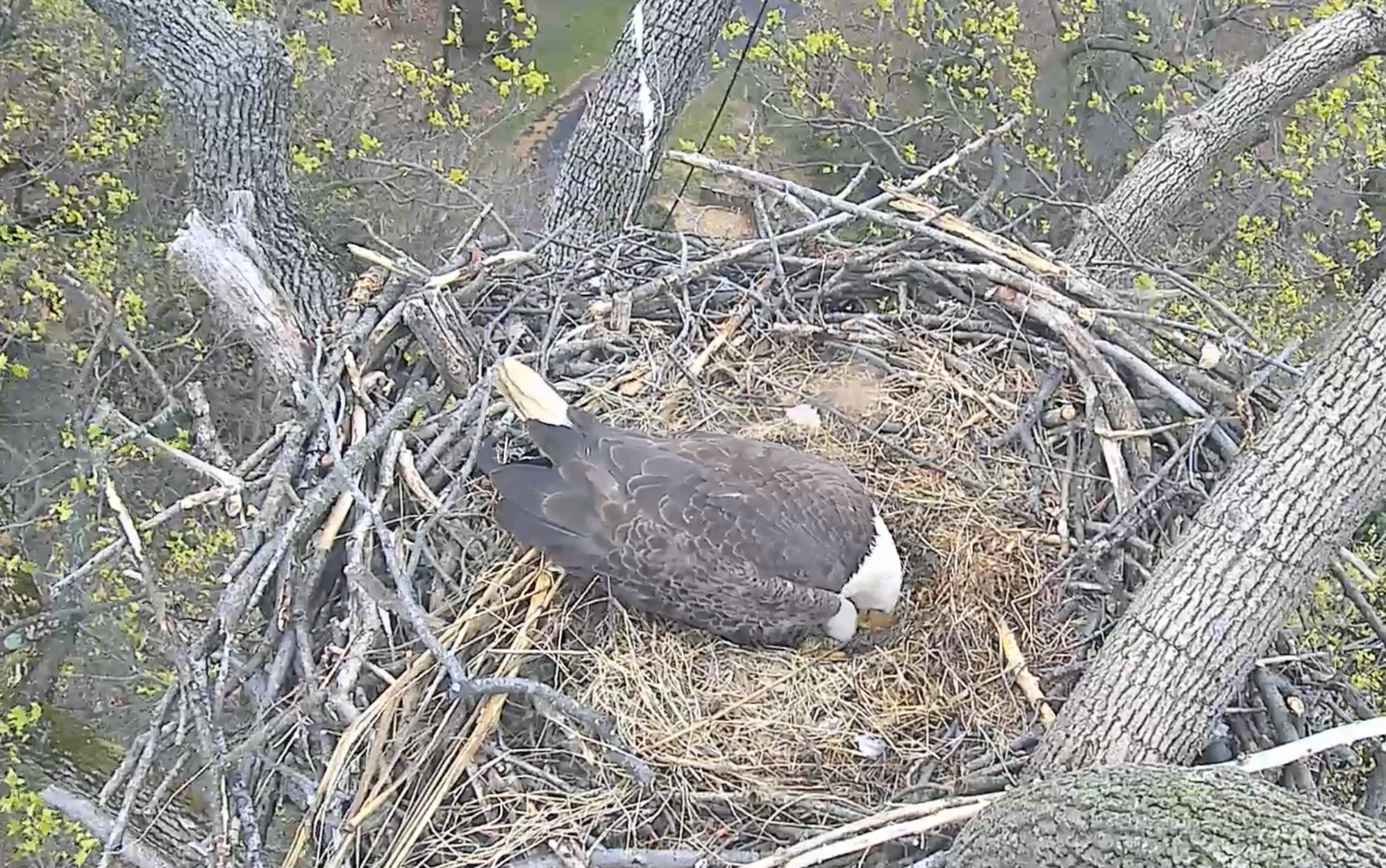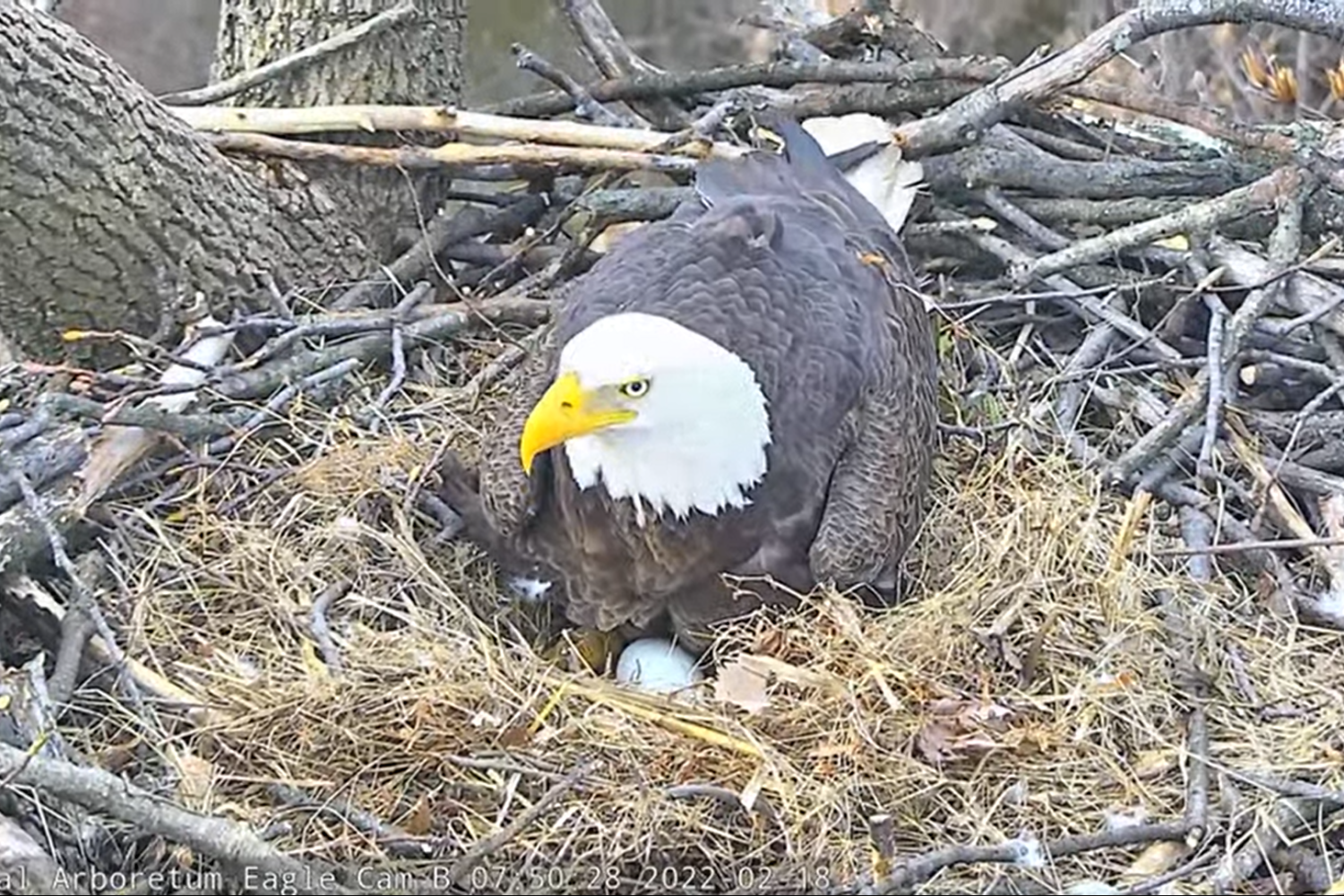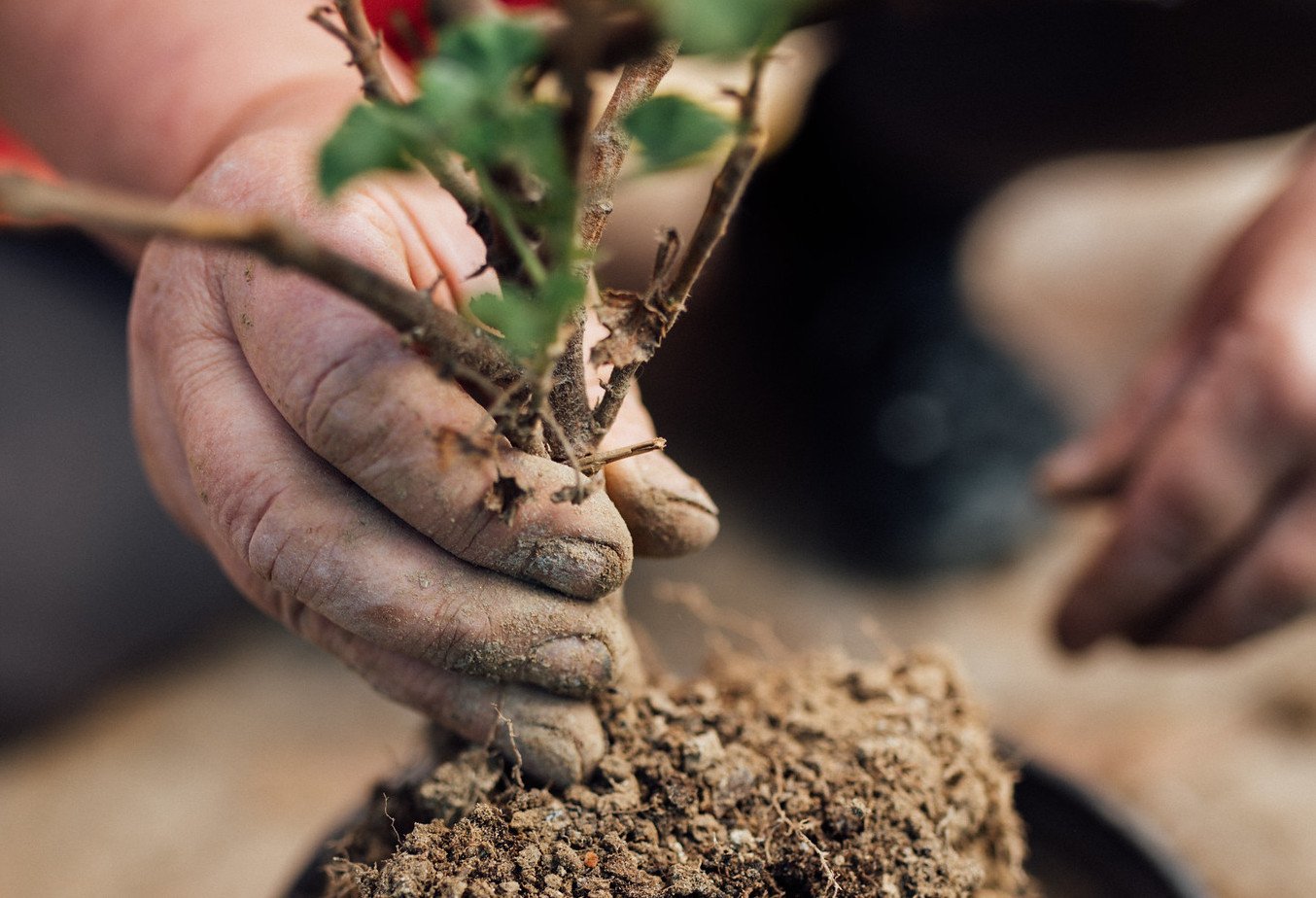We can count on our talons the number of days until expectant parents Mr. President and Lotus—a celebrity pair of bald eagles who nest in the National Arboretum—will welcome two eaglets into the world.
It’s been a little over a month since Lotus (Lady of the United States) laid her first egg. The bald eagle gestation period lasts approximately 34 to 36 days, and bird watchers and conservationists have been at the edges of their seats ever since. Jessica Hall, the executive director of the American Eagle Foundation, says her group expects the first pip—or the first break in the shell—to occur in the first egg on Thursday, March 24, and the second egg on Sunday, March 27. From there, the chicks can take up to 24 to 36 hours to fully hatch. If you’re patient, you may even catch the process in action through the foundation’s live cams.
“If all goes right, we’ll have two eagles by the end of the weekend,” says Daniel Rauch, a DC Department of Energy & Environment wildlife biologist also known as “Dan the Bird Man.”
Once hatched, the eaglets would be the first chicks within the National Arboretum since 2018—a cause for celebration since bald eagles are good indicators of habitat health and water quality. It’s one reason why people were ecstatic when Mr. President and his former partner, First Lady, first settled into their nest in 2015. At that point, it had been 68 years since an eagle had laid eggs within the arboretum.
“They’re what we consider to be a species of greatest conservation need, which is a federal designation done by the District, so it’s a species that we concentrate on,” Rauch says. “We use resources to either monitor or improve the habitat for that species hoping that it will have a trickle trickle down effect. If we can maintain bald eagles in the District, then that would impact other species who use similar habitats.”
According to aerial surveys, the District knows of approximately 20 active eagle nests in the area, Rauch says.
But Mr. President’s nest in particular—located approximately 80 feet up a tulip poplar tree—has been in the spotlight as of late, due to its unfolding drama. In case you’ve missed out on the soap opera last month, Lotus became Mr. President’s partner after a falling-out with First Lady, with whom he’d cohabitated for eight years. Eagles usually mate for life, but they will part ways if issues arise, Rauch says. And while the two laid seven eggs together over the course of their relationship, the feathered pair spent the last few years as (truly) empty nesters—setting the scene for the breakup that followed.
At first, First Lady defended her roost from other visiting female suitors—reportedly swooping in at 50 mph with her talons out. But she eventually flew away on Valentine’s Day after a scuffle with Lotus and hasn’t been seen since. And because the eagles aren’t banded, there’s no way of knowing where she is, Rauch says.
Mr. President was unfazed by First Lady’s departure. The new couple promptly sparked a courtship, nuzzling each other and sharing fish dinners. “They’re a rather amorous couple,” Rauch says. It didn’t take long before Lotus laid her eggs in February.
Despite being a first-time mother, Lotus is “doing everything right,” Rauch says. Mr. President, he says, “is very experienced; he has no problem. But we’ll see what the look on her eagle face will be when the first chick comes—it may spook her, I don’t know. Or maybe she’ll just pause for a minute and then hormones will kick right in and she’ll start feeding.”
No matter what happens, it’s important that the second egg hatches within a few days after the first, Rauch says. That way, the eaglets grow at about the same size, preventing one sibling from dominating the other. He added that other complications could arise too. The eggs could turn out to be infertile or the eaglets inside them may not be strong enough to break through the shell.
As the foundation notes on its eagle-cam page: “This is a wild eagle nest and anything can happen. While we hope that all eaglets hatched in this nest will grow up healthy and successfully fledge each season, things like sibling rivalry, predators, natural disaster as well as territorial disputes can affect this eagle family and may be difficult to watch.”
Misfortune is “always a possibility” with eagles, Rauch says, though he says that up to this point, the eagles local scientists have been tracking have “hatched fully and have been fine and have not had any kind of complications.”



















